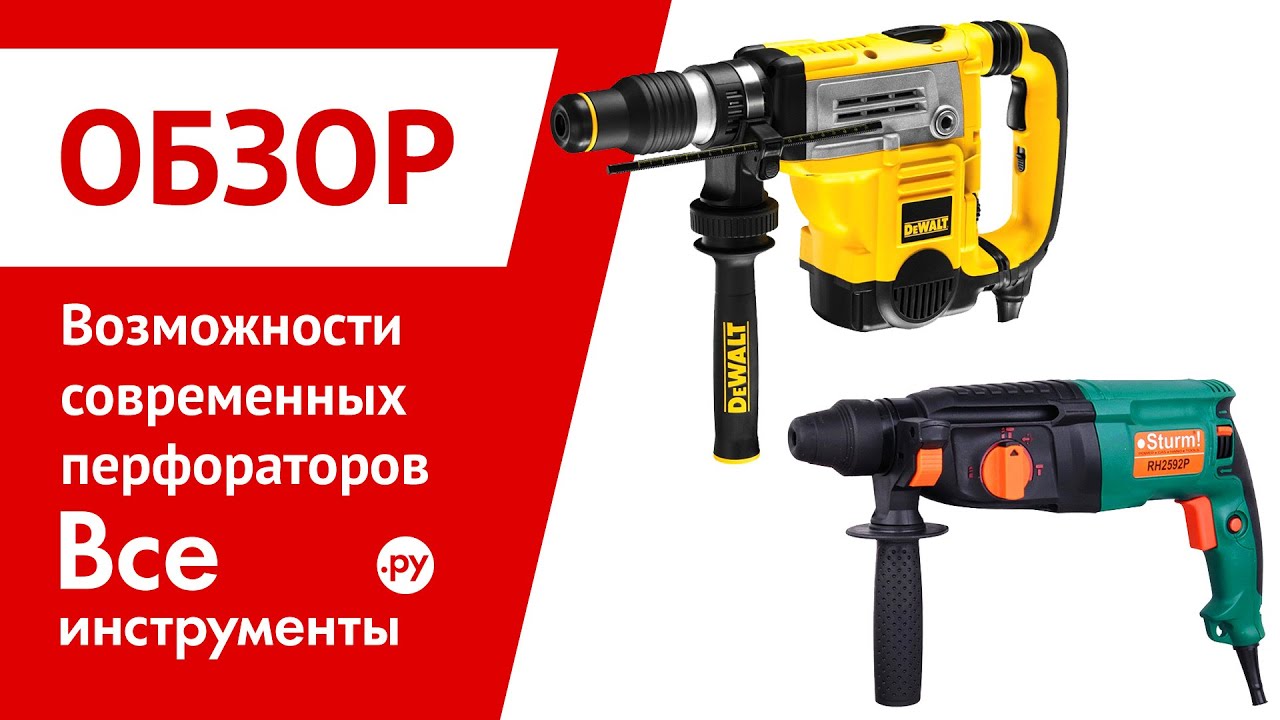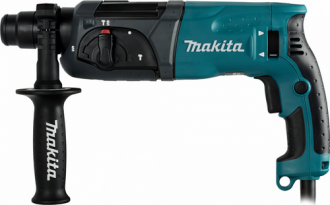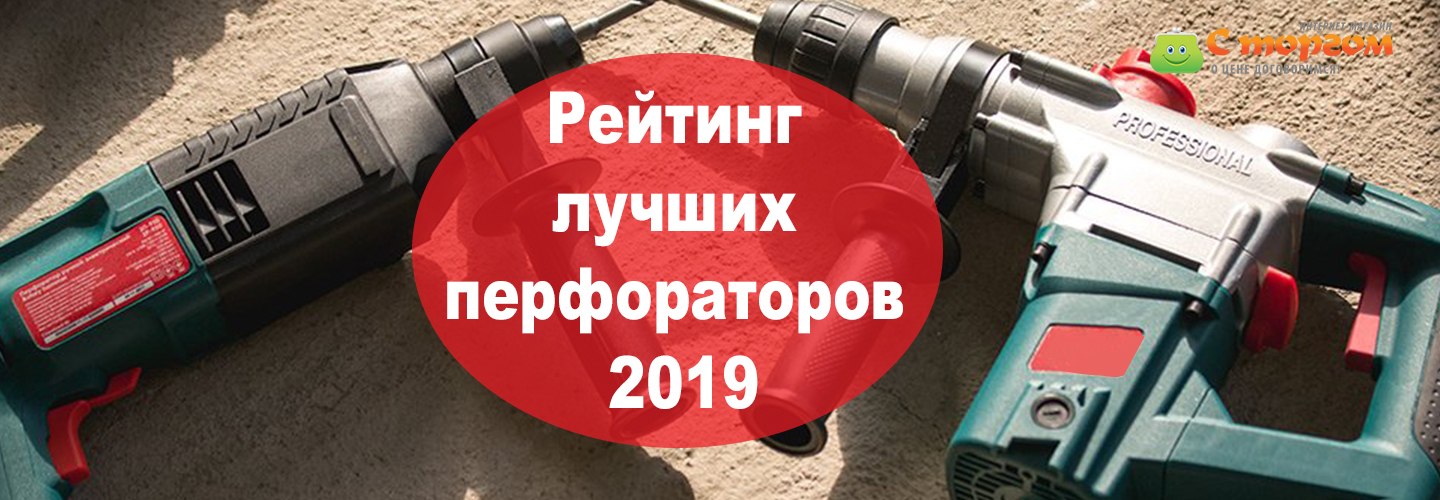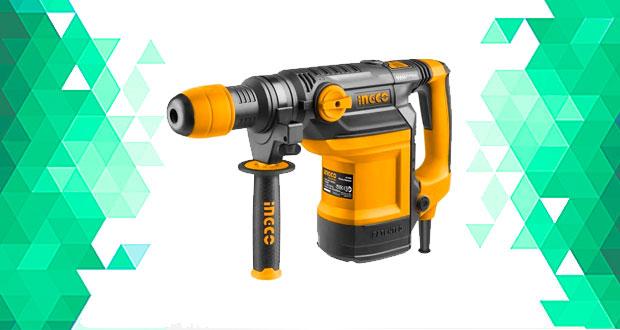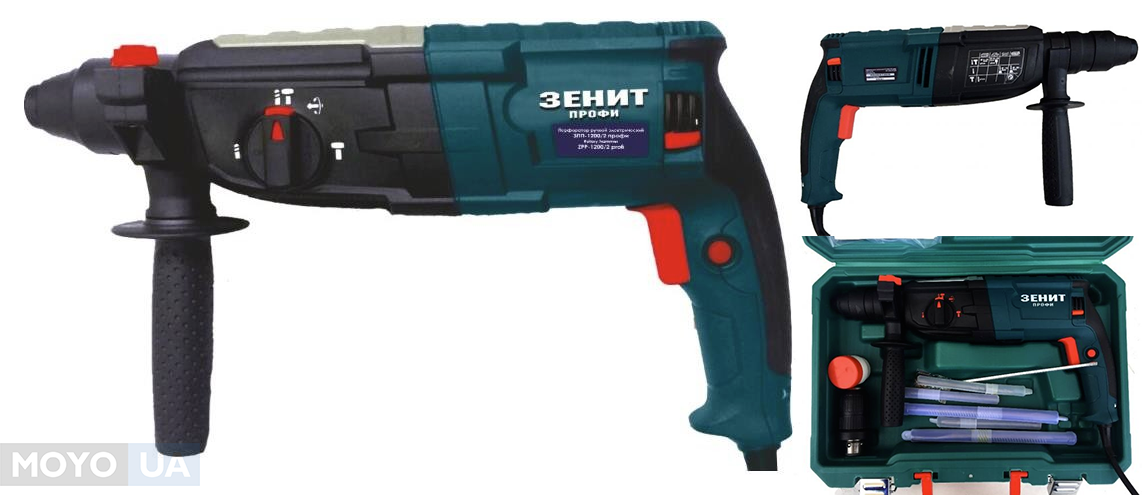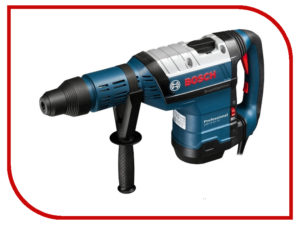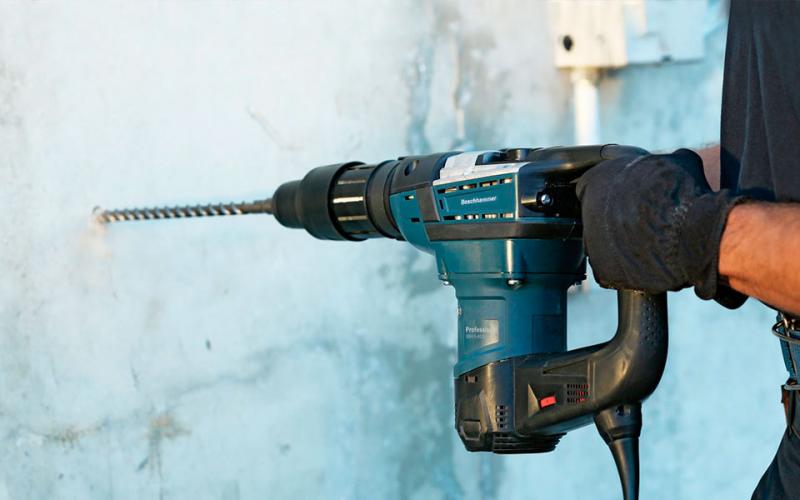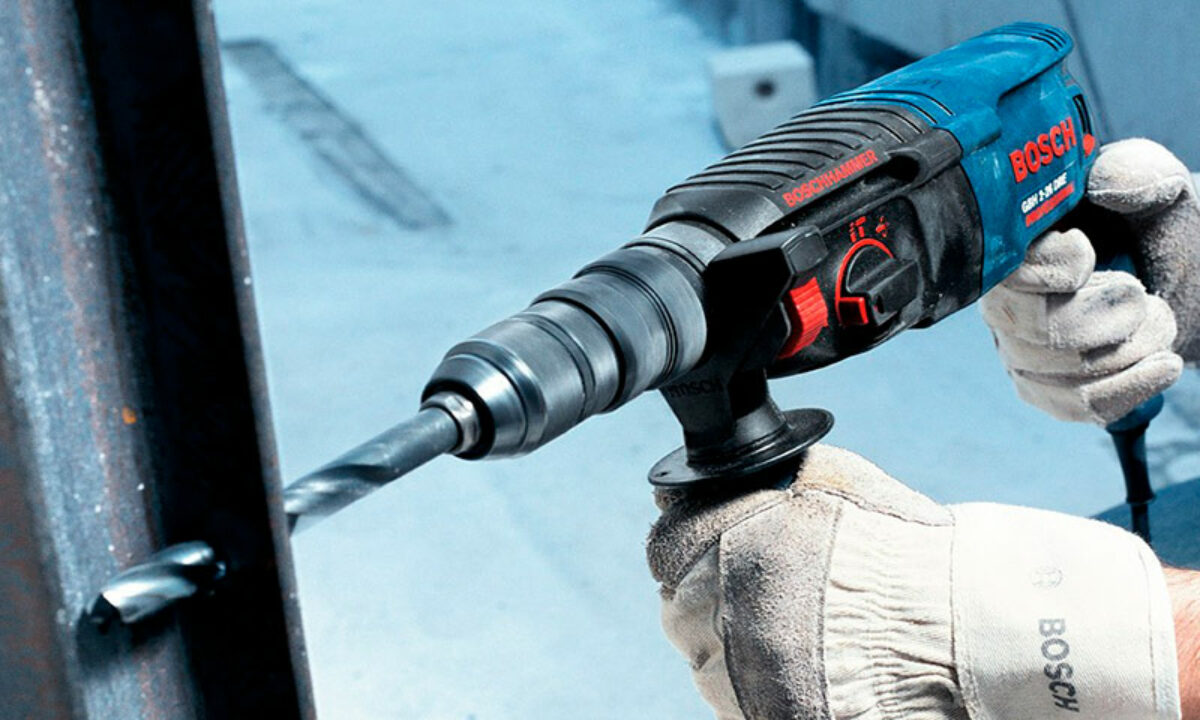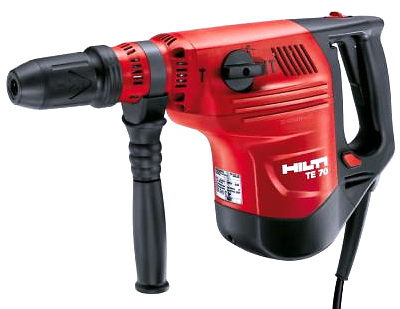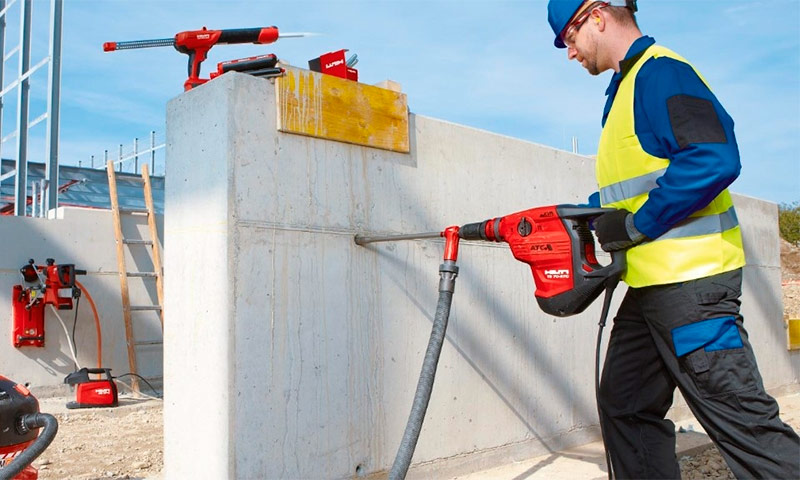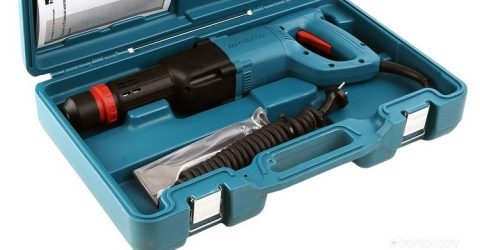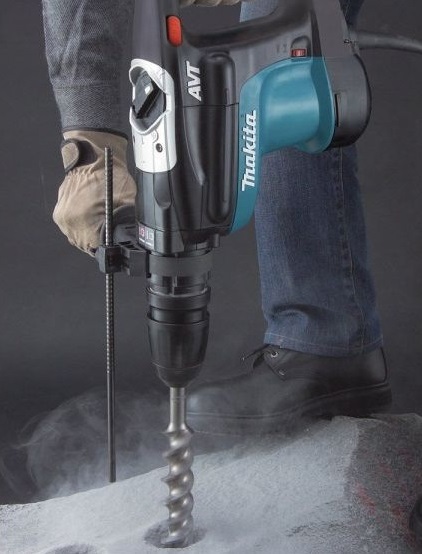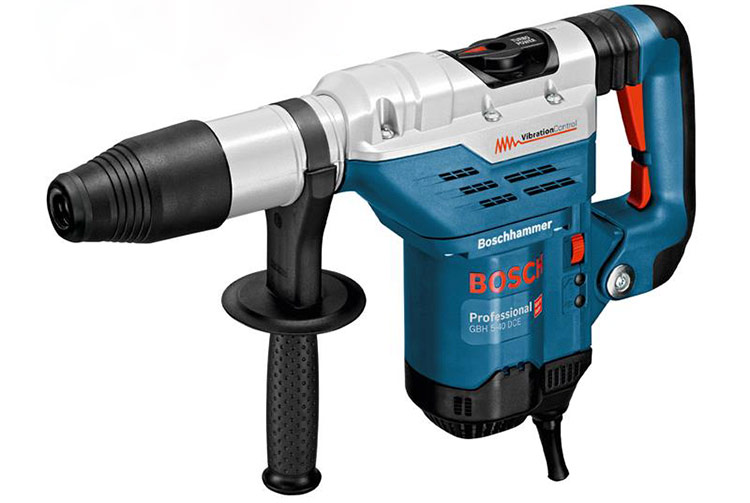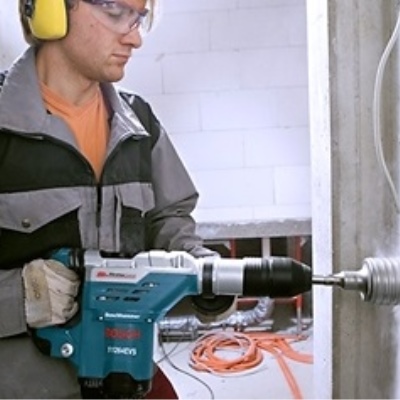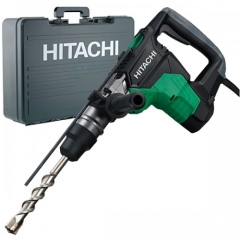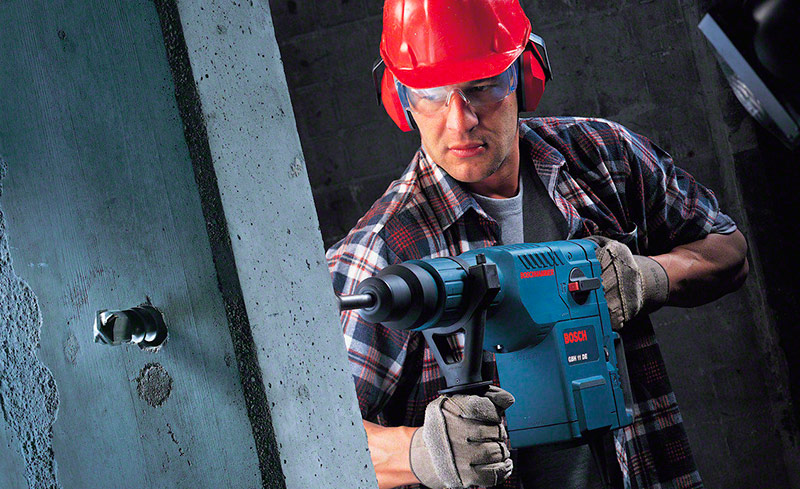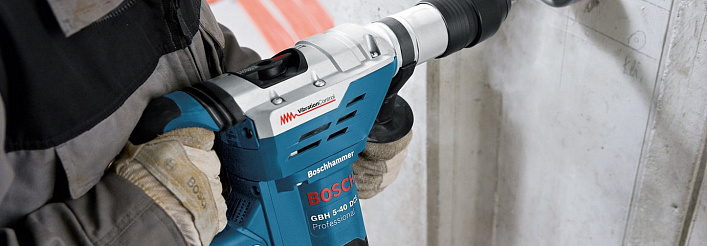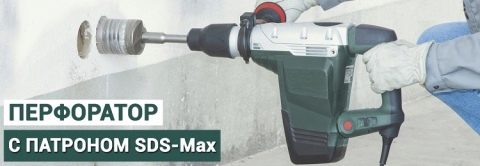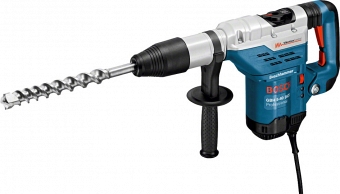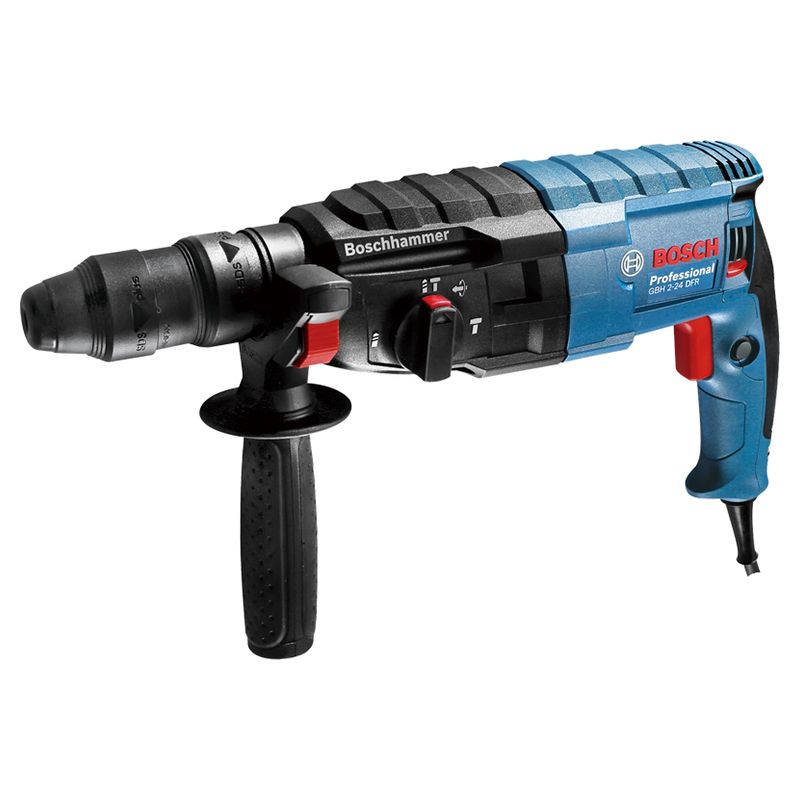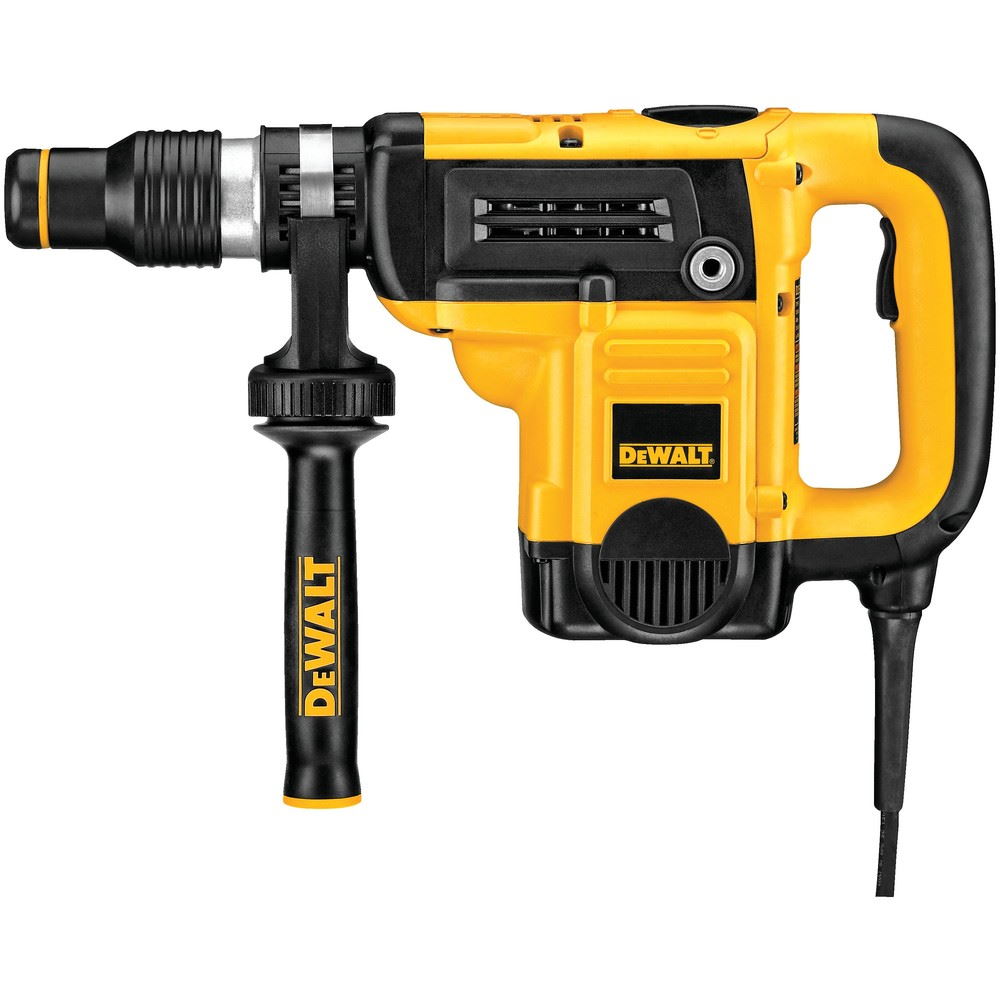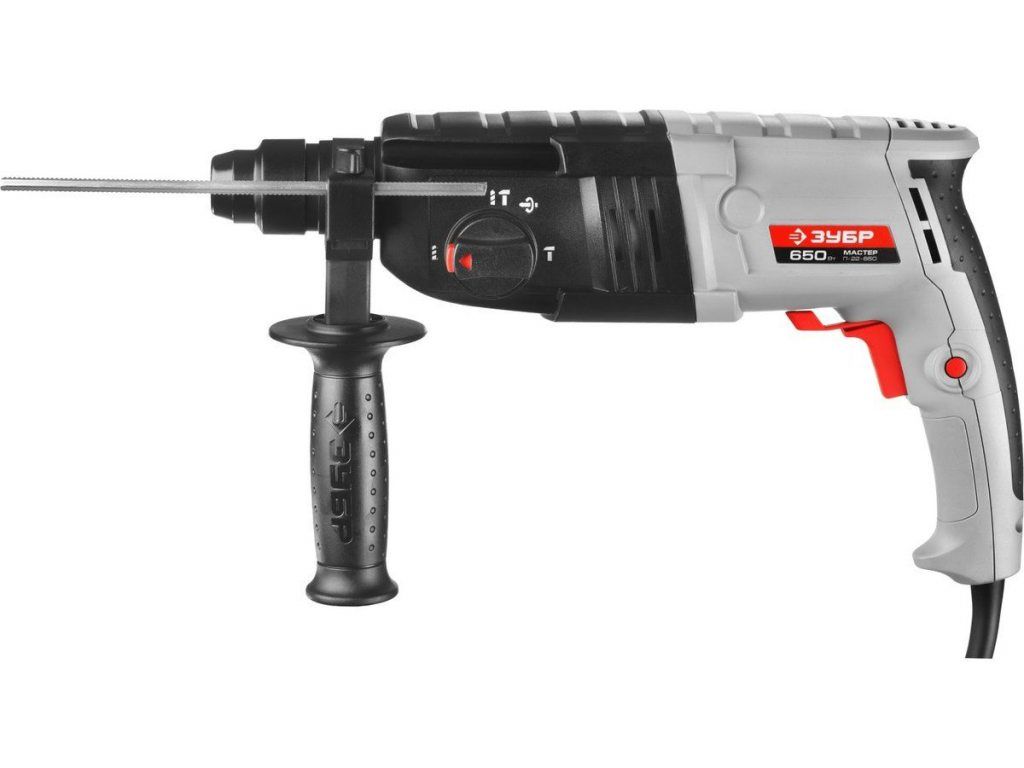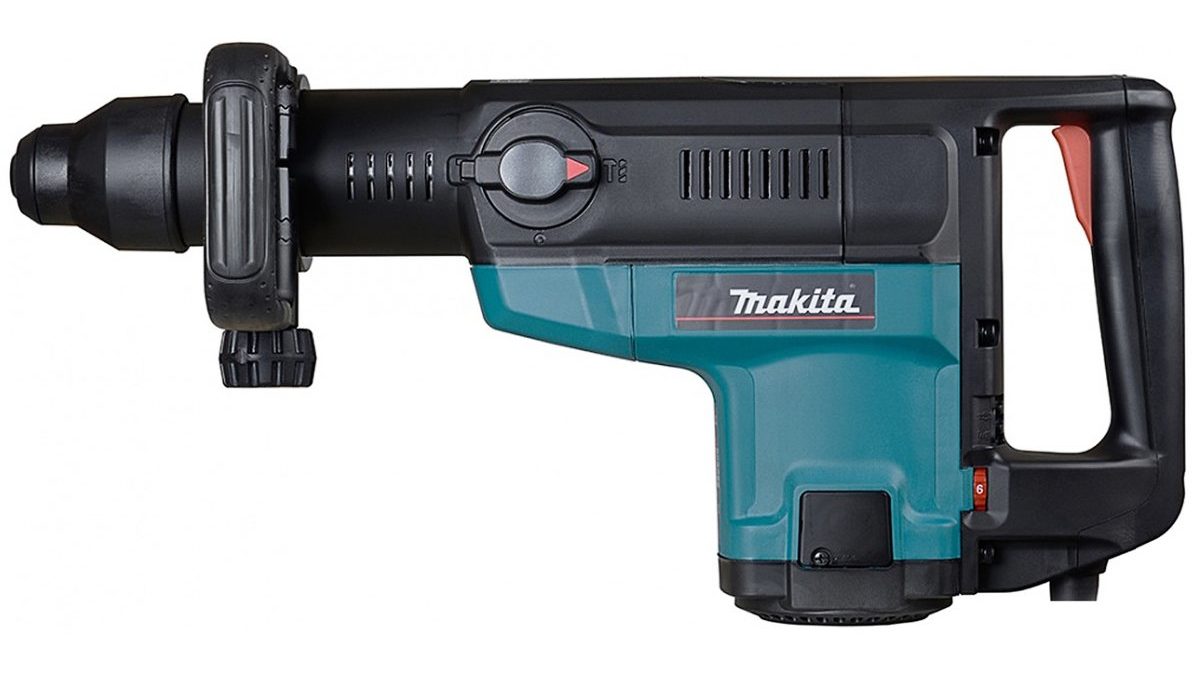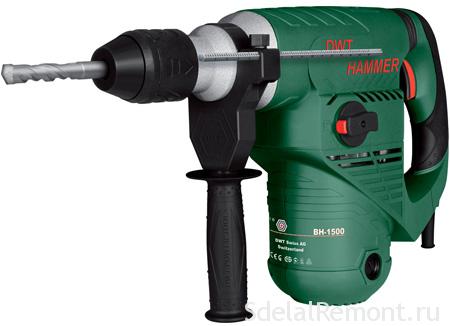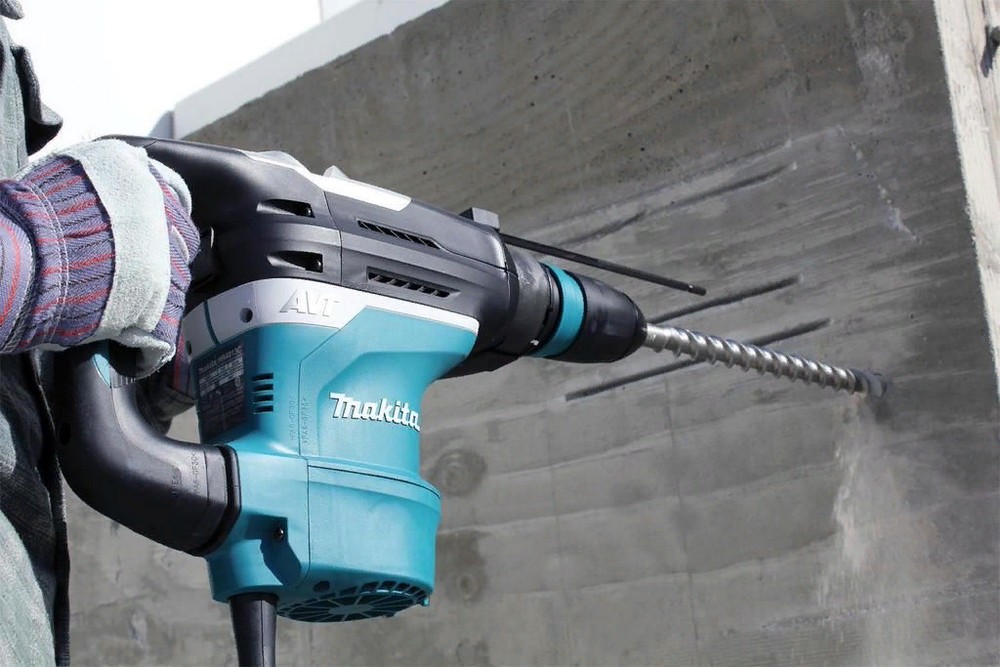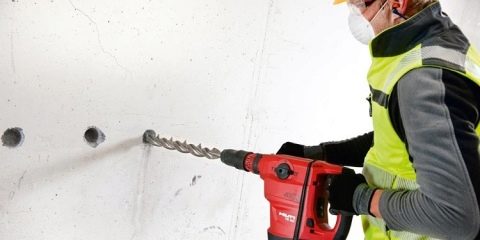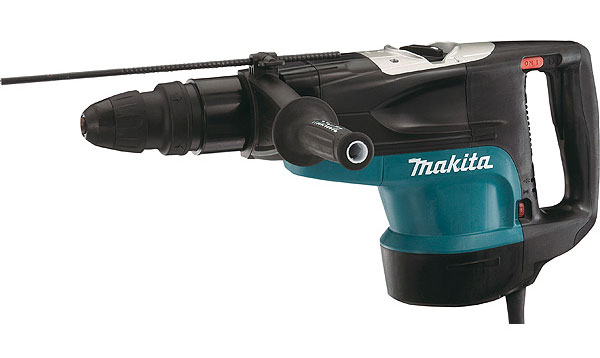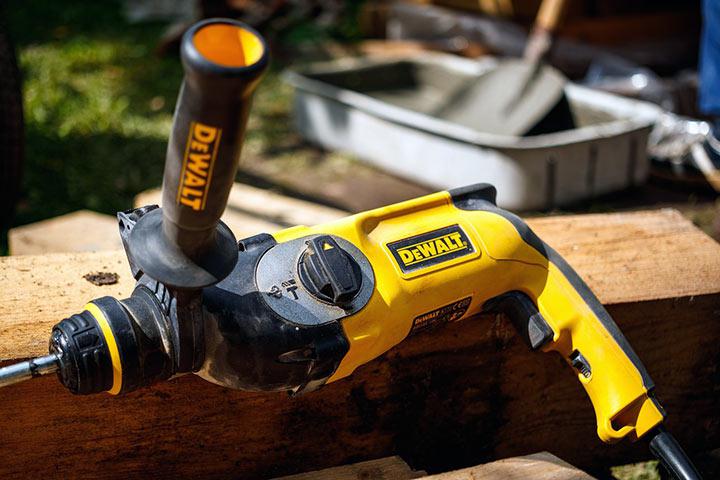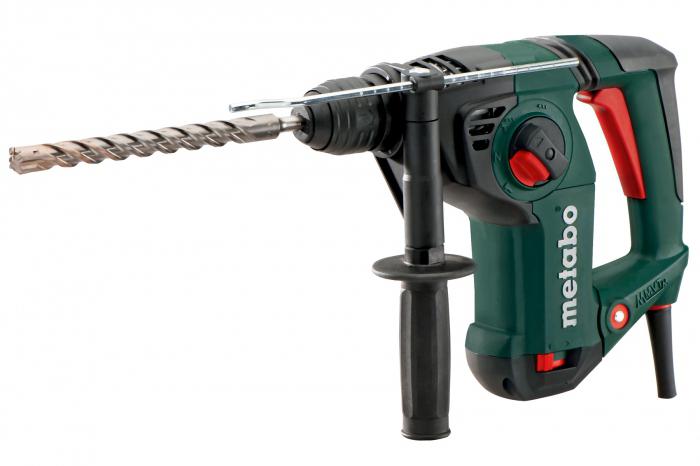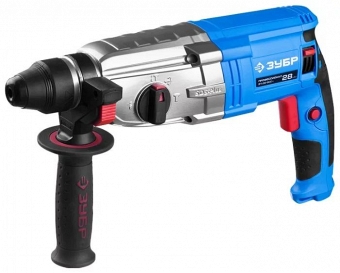Drill or hammer drill?
Both tools are designed to punch holes on all surfaces. When using a drill, the task is accomplished thanks to the rotation and impact on the drill. It should be noted that the shock amplitude is not too high, which affects the efficiency indicators, therefore, very often when performing work, it is necessary to increase the pressure on the tool and build up vibration. There are models with two speeds, working on the principle of a mechanism - an automatic machine in a car with gearboxes.
As for the hammer drill, it is equipped with a pneumatic or mechanical mechanism that uses an electric current to strike. Working with this unit, you only need to press a button, which significantly saves power costs. The advantage is also the higher power to handle hard materials, which is the difference between the two devices. They can be used in the following areas:
- For creating holes in metal, wood, brick, concrete walls.
- At low speed, the units are capable of tightening screws and self-tapping screws.
- They can perform the functions of a grinder, grinder or stationary drill, if you install special devices.
What is the difference between a drill and a hammer drill?
Despite the fact that the rotary hammer and drill are designed to perform the same type of tasks, they differ in many ways. Let's consider the main ones:
- Features of the shock system. The drill operates on two gear mechanisms called ratchets. A cartridge is connected to one of them, a body is connected to the other. In the absence of the need for a blow, a stopper arises between them, blocking contact. Completely different processes are observed in the perforator mechanism. The blow is made automatically, with the help of a special mechanical or pneumatic device, immediately after pressing the start button. The design contains either a pair of coils that cause the core to move back and forth, or rolling bearings are key parts.
- Functionality. The hammer drill should be called the winner according to this criterion, since its mechanism provides three operating modes, which include rotation, rotation + impact and just impact. Thus, with the help of the unit, it is possible to both drill the wall and punch it. As for the drill, it is rich in only two modes - drilling standard and hammer drilling.
Attention! The magnitude of the impact force of the drill is much weaker than that of the hammer drill.
- According to the main characteristics, electric drills have a twisting mechanism, which is measured in Newton meters. The rock drill is classified in terms of power, depending on the impact energy. This value is displayed in J (joules). And the twisting mechanism of the drill itself is much larger.
- Performance characteristic. The perforator is the winner in this indicator, since it is more comfortable to work with it, and the impact rate is higher than that of a drill.
Can a rotary hammer be used as a drill?
The main activity of the drill is considered to be the drilling of metal surfaces, wood and tiles. Concrete and brick surfaces are pierced with a perforator, since its power is higher. Of course, both devices can replace each other, but how will it end? If you decide to use a hammer drill instead of a drill, then you must take into account that the function provides for short-term operation, otherwise the unit may not withstand the stress and burn out. Plus, the process will take more time and effort.
Important! It is best to use both devices for their intended purpose, saving your energy, nerves and time.
Rotary hammer HITACHI DH40MRY
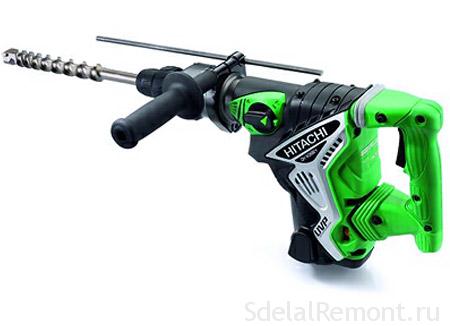
This tool favorably stands out among its brothers in the design of the case, but otherwise it is similar to those discussed earlier. With a motor power of no more than 950 W, the hammer drill demonstrates an impact energy of 10.5 J. Of interest is also a high level of protection of the motor from the ingress of small construction waste during operation. Speaking of protection, we should also mention the presence of an anti-vibration system of the same brand. Also, the tool boasts a high frequency of impacts: up to 2650 per minute, which is associated with the ability to electronically adjust the engine speed: up to a maximum of 480 rpm. The holes that the rock drill can give out will be a maximum of 40 mm in diameter, with the use of hollow drill bits, this parameter increases to 105 mm. The price of such a miracle is 16.5 thousand Russian rubles.
Features of rotary hammers with SDS PLUS chuck
The SDS (Special Direct System) system is designed to hold the shank of a drill, chisel or other tooling and is used in light to medium rock drills. It allows you to fix the rig with a simple movement and replace it in a matter of seconds.
The SDS PLUS shank has a diameter of 10 mm and fits into the chuck of the power tool to a depth of 40 mm. The locking balls securely fix it in the grooves. The diameter of the used drill can be up to 32 mm. Drilling can be carried out in percussion and non-percussion mode.
Rotary hammers with SDS PLUS mount are ideal for home use. Such a hammer drill copes well with drilling stone, concrete and other hard materials. Lightweight rock drills are used for drilling holes with a diameter of 4 to 16 mm and are rarely used as a percussion tool since the force of their impact is rather low. Medium rock drills are designed for drilling holes with a diameter of 16 to 25 mm and for demolition work.
When it comes to chiselling, the SDS PLUS hammer drills are good at handling light to medium impact loads. For example, they can be used to dismantle tiles or brickwork.
But work on chipping must be carried out with caution, since the small diameter of the tool shank does not have significant strength and can break under strong shock loads. In addition, this can lead to premature wear of the locking balls of the SDS PLUS chuck.
Another disadvantage of SDS Plus perforators is that, due to the small shank diameter, on drills with a diameter of 18 mm or more, misalignment is observed. The drill starts to "walk", which affects the usability and quality of work performed.
Next, we suggest that you familiarize yourself with the SDS PLUS rotary hammer rating compiled on the basis of user reviews and ratings.
Differences between a drill and a hammer drill
The main difference is the percussion system
The most significant difference between the hammer drill and the hammer drill is the principle of the hammer system. So, in a drill, two gear mechanisms - ratchets - serve to form a blow. The tool holder is rigidly connected to the first of them, and its body is rigidly connected to the second. When the impact mechanism is not needed, a stopper is inserted between the ratchets, and they have no contact. When the impact mode is turned on, the stopper is removed, and the gear train converts the rotational movement of the chuck into a forward-return movement.
This process is just beautifully shown in the following video clip, despite the fact that the announcer in the video constantly calls the hammer drill a hammer drill, in fact, the video shows the work of a conventional hammer drill. It's just how the translators and the announcer know how a drill with a hammer drill function differs, they haven't read our article :).
Video. How the impact drill works
The hammer drill is different. The impact device can be either electromechanical or electropneumatic. The first type is most commonly used. In this case, there are two coils, which, with electromagnetic interaction, cause the core to move back and forth.Then the energy is transferred directly to the working part of the rock drill.
The pneumatic mechanism can be of two types. Equipped with a crank drive or a system with a so-called "drunken" rolling bearing. In the latter case, the rotating rotor drives the piston, which transfers the impact energy to the working part.
Video. Drunken Bearing Impact Mechanism
Well, the crank-type mechanism transfers its rotational energy with the help of a piston, which with compressed air gives a push to the working part of the perforator.
Functionality is important
In this regard, the hammer drill is significantly ahead of the drill - after all, it has as many as three modes of operation. It's spinning, spinning hitting and just hitting. Accordingly, with the help of an electric punch, you can not only drill the wall, but also punch it. Punching a big hole, gouging a groove for a cable, chipping off a piece of a wall - all this is within the power of such a powerful tool as a hammer drill. But the hammer drill has only two modes - standard drilling and drilling using impact. Moreover, the force of this blow is not as powerful as that of a hammer drill.
What is the difference between the main characteristics
For electric drills, the main characteristic is torque, or torque. The unit for its measurement is Newton meter. Perforators are classified according to a different criterion. For them, the main thing is power, which depends on the impact energy. This value is measured in joules. And the torque of the hammer drill should not be at all large, it is often much less than that of an impact drill with a similar power engine.
Leader in performance
And then the hammer drill takes the lead again. After all, the impact energy he has, no doubt, is greater than that of an impact drill. Therefore, working with a hammer drill is much more comfortable - it is not necessary to press on it as hard as on an impact drill. Working with the latter, it will be extremely difficult to punch a hole without significant pressure.
Main application
For the drill, the main field of application is in drilling metal, tiles and wood surfaces. Well, the hammer drill is designed to overcome concrete and brick walls. Therefore, it is difficult to compare the result of the work performed by one and the other tool in terms of the hours or minutes spent, and in terms of quality. Indeed, for a drill, the impact function is only an additional one. However, as well as the drilling functions of the hammer drill. Do not neglect the instructions, using the tool "to the full extent" where only short-term operation is allowed. Sadly it will end - a good thing will break.
Features of rotary hammers with SDS-Max chuck
To fix the equipment, peculiar locks are installed in the hammer drill chuck, which are of several types. In rock drills, the most common systems are SDS + and SDS-Max. Drills and bits for them must be selected with the appropriate shanks. To understand the advantages of the SDS-Max type, let's compare them with each other.
SDS + was developed in 1975 and is used on light and medium models with three modes of operation. The fastening system implies the presence of two grooves on the tool shank, into which the locking balls go. The end of the drill is immersed in the chuck to a depth of 40 mm, and the contact area of the clamping clamps is 75 mm². To install the tooling, it is necessary to press on the retaining ring of the chuck. This design is designed for a shank diameter of 10 mm and is capable of fixing drills with a working section of up to 32 mm.
SDS Plus Tool Shank
The SDS-Max rock drills are more powerful than their predecessors on the SDS Plus and are designed for serious tasks. It is capable of working with drills up to 50 mm in diameter and hollow crowns up to 160 mm. To hold such a rig, five grooves are used at once, into which the wedges enter. The total contact area is 389 mm². 18 mm shank diameter and 70 mm immersion ensure a secure fit. But these rock drills often only support two modes of operation: clean and spinning.Drilling holes with increased accuracy with such a tool will not work.
SDS-Max tool shank.
Cross-section of SDS Plus and SDS Max shanks:
Rotary hammer DeWALT D 25600 K

The uniqueness of the tool is in the presence of a specially designed plastic housing of the gearbox, which does not need to be removed during service, which significantly reduces the process itself. Thanks to this successful innovation, the body's ability to dissipate heat during operation has increased, cooling the tool, and also makes it easier to access the carbon brushes. In addition, the hammer drill is equipped with a comfortable extended handle that can be attached to the back of the drill. The power and impact energy of such a tool are 1150 W and 10 J, respectively. A small disadvantage of the system is the absence of the AVT system, which is not fully compensated by the presence of shock absorber pads. There is also an indication system that allows you to timely identify and eliminate wear or damage.
Like the previous contestant, the tool allows holes to be drilled in the region of 45 mm. Its weight is 6.8 kg, and the cost is 19.5 thousand rubles. However, for this price (in case of getting into the action, of course) we get, together with a perforator, a DeWALT D 28942 grinder (power 2.2 kW, circle diameter 230 mm) in one large suitcase. In free sale, the purchase of such a gift will cost 5.5 thousand rubles.
When should you buy a rotary hammer with an SDS-Max chuck
If light and medium rock drills are suitable for drilling, installing anchors, dowels, chiselling a wall to make a hole for communications, then the SDS-Max models can act as a real jackhammer.
With their help, it will easily turn out:
- remove a thick layer of reinforced concrete;
- destroy a wall partition made of brickwork or concrete blocks;
- dismantle the asphalt pavement from the road;
- to split the heavy rock.
They can also be used for simpler tasks (drill a hole for a cable or pipe in the wall, perform a ventilation outlet, cut a niche for an outlet, etc.), but due to the increased power of the tool, such work will be done much faster. Therefore, SDS Max perforators are purchased not only for heavy dismantling work, but also for laying electricians or plumbing in large volumes. Then they pay off in productivity and help to hand over the object faster.
Perforators with SDS Max cartridges weigh from 5 kg, which is important to consider when choosing, because
if there is a lot of ceiling work, more frequent breaks will be needed. The security requirements are much higher here. Lightweight SDS + can weigh 3-4 kg, making it much easier to hold at height. The powerful tool requires a high level of operator skill to operate and is therefore only suitable for professional use.
How to choose a universal heavy puncher SDS MAX
Often, due to the high cost of tools, the question arises: which is more profitable to take - a perforator or a jackhammer. Moreover, it is more profitable both in terms of cost and versatility of the tool. In case such confusion has arisen, the choice is obvious: a hammer drill.
Heavy hammer drills are conventionally divided into 3 main groups, based on their weight:
- weight no more than 5 kg;
- weight no more than 7 kg;
- weight 11 kg or more.
Perforators of the middle weight category are practically not inferior in functionality to heavy perforators, significantly differing in price. Their main functionality is quite wide: installing split systems, drilling wall openings and laying pipes and wiring. An indisputable plus of 7 kg tools is also the possibility of using drills for light hammer drills thanks to the SDS + adapter. This option will significantly save money.
In order to simplify the choice of rotary hammers, let's compare the most popular brands with approximately equal parameters, in the same weight category (except for the last) and the terms of the warranty service.These will be hammer drills Makita HR4011C, DeWALT D 25600 K, HITACHI DH40MRY, Hilti TE 76-АТС, AEG PN 11 E (heavy hammer drill).
Peculiarities
Rock drill models equipped with SDS-Max chucks have a high impact force, so they allow you to quickly and efficiently drill holes in slabs of any material. As a rule, they are purchased for large-scale construction work. If it is planned to do cosmetic repairs in the house or apartment, then it makes no sense to choose such power devices.
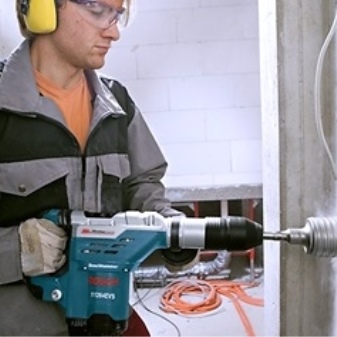

Devices that meet the standard SDS-Max requirements typically have an impact force of 7 to 10 Joules and have an operating capacity of 1700 W. Thanks to this power, the device can create a frequency range of 600 o / s. Since such equipment is highly functional, its weight often exceeds 10 kg. To make the workflow comfortable, many manufacturers complement rock drills with special handles. They allow not only to conveniently carry the equipment, but also to support it while drilling holes.
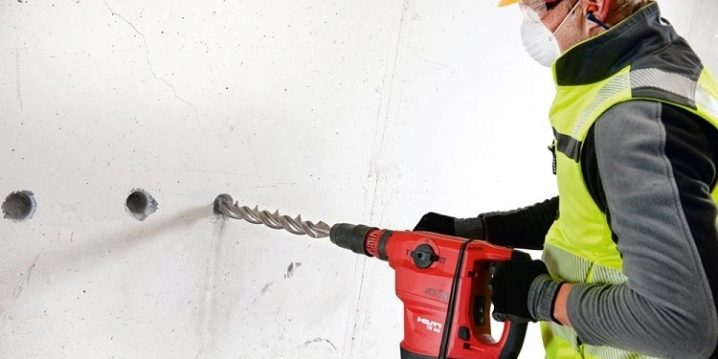
The SDS-Max chuck significantly expands and improves the technical capabilities of the rotary hammer. This mechanism allows you to complete the tool with various attachments, the diameter of which may even exceed 160 mm. The drill fixing system is practically no different from conventional devices of this type - it is convenient and simple. Such perforators can differ not only in appearance, but also in operating modes, power supply system. Therefore, before making a choice in favor of this or that model, it is necessary to take into account all the characteristics and purpose of the device.
Conclusions.
Verdict: each heavy hammer drill has both pluses and minuses, however, the DeWALT D 25600 K is most suitable for the initially set parameters (a small construction team), because:
- an angle grinder in addition will not be superfluous;
- lightness, convenience and excellent technical parameters, such as: engine power and impact energy, favorably distinguish the perforator among others;
- the quality of products manufactured by DeWALT is beyond doubt;
- The level of service of the company has only improved over the past few years, which causes multiple positive responses, in addition: a variety of pleasant promotions and bonuses have served their reputation.
Ultimately, the information provided is based on purely personal experience and is for informational purposes only. Everyone is free to select and choose a tool based on their own ideas about quality, safety and sufficient service.
Especially for the site renovation of the apartment.



